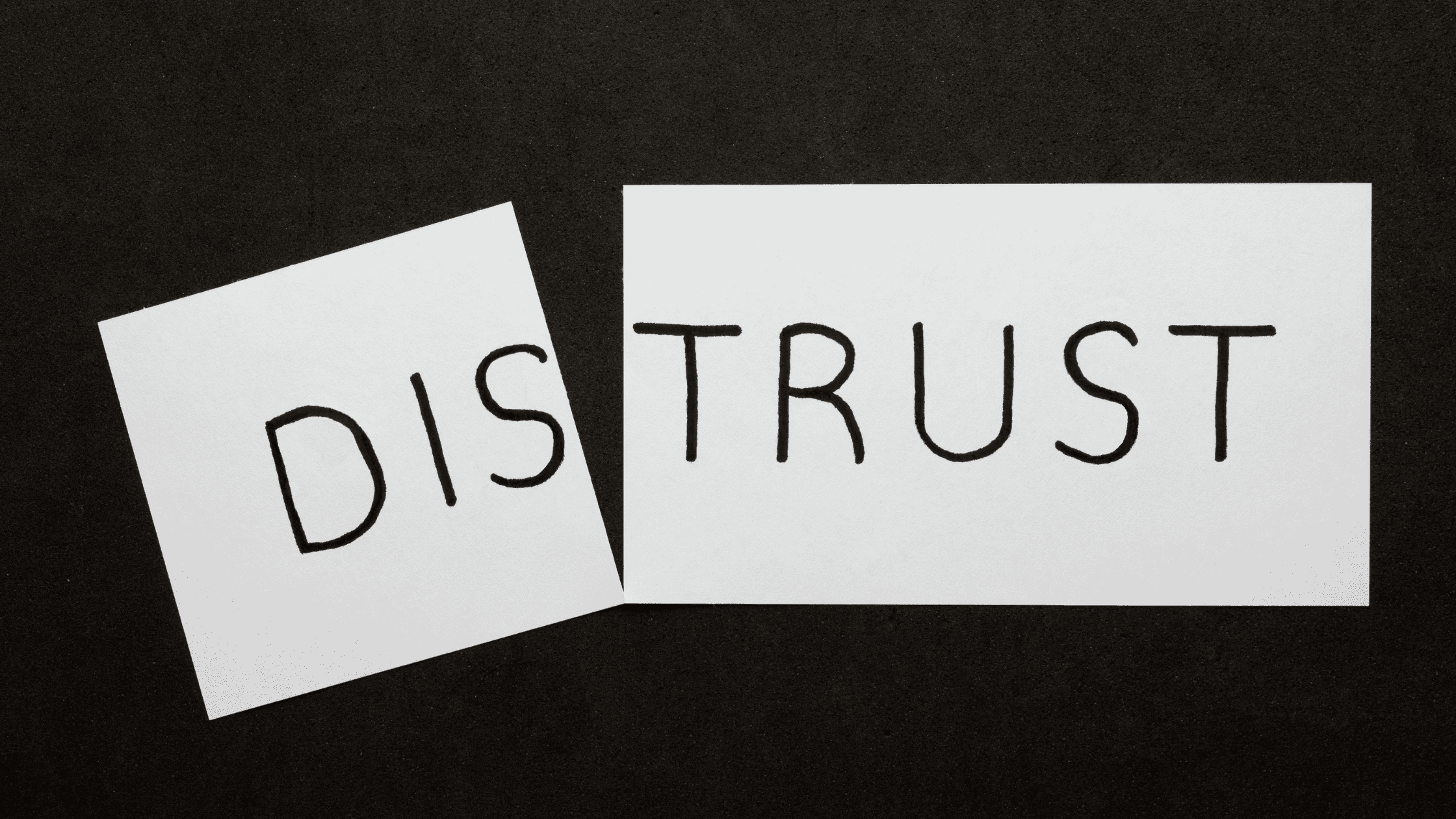Life is all about lessons, whether we like them or not. And one of the most significant lessons I’ve learned is that the loudest voice in the room isn’t always heard, and the person who talks the most isn’t always right. More often than not, it’s the quiet ones who have the most to say.
This lesson became very clear during my years working in corporate America. I was always flabbergasted by the number of people who wouldn’t speak up during meetings, preferring to stay silent even when they had valid points to share.
The burning question is – why don’t we speak up more?
The paradigm of knowing we should speak up but not doing it is something I witness time and time again in my coaching practice. We allow our fears to control us more than we’d like to admit. It is human nature to fear being made fun of or, worse – rejected. So we don’t share our ideas and stay in our comfort zone.
The result? Mediocre work, relationships, and lives.
It takes courage to speak up, to be vulnerable, and to put yourself out there – but it’s so worth it! When you do, you open up the floodgates for collaboration, creativity, and connection. You also set the stage for conflict in communication – but that’s not necessarily a bad thing.
In fact, conflict is often a necessary part of growth. Without it, we wouldn’t be pushed to examine our beliefs or to develop new ones. We wouldn’t be challenged to think outside the box or to come up with creative solutions. In short, without conflict, we would stagnate.
The key is approaching conflict with a positive attitude and an open mind. Remember, the goal isn’t to win or to be right – it’s to try and find a resolution that works for everyone involved. When you keep this in mind, you’re more likely to foster a productive, respectful dialogue that leads to creative solutions. In this post, I’m going to dive into the vital role of conflict resolution, its correlation with poor communication, and how silence in the workplace can be deadly.
What is conflict in communication?

Conflict in communication often occurs when people misunderstand each other. Miscommunication can happen when people speak different languages or when they have different assumptions or expectations. Many conflicts arise because people are afraid to speak up or don’t know how to express themselves effectively.
Conflict can also arise when people have different values, beliefs, or goals. For example, two employees may conflict over a work issue because one values quality and the other values speed.
It can also occur when people have different communication styles or are feeling emotions like anger, fear, or frustration. In the workplace, conflict is often caused by differences in job roles or by competition for resources. Whatever the cause, conflict in communication can lead to misunderstanding and frustration, and it can interfere with productivity and innovation.
When conflict does occur, it is important to address it head-on to resolve it and prevent it from happening again in the future. Ultimately, it causes silence to fill the air instead of ideas and creativity.
5 Tips for Managing and Resolving Workplace Conflict
When a conflict arises, it’s important to deal with it constructively. Here are some tips for resolving conflict effectively:
1. Identify the problem

Conflict in the workplace is all too common. Whether it’s between co-workers or between managers and employees, it can be tough to deal with. But, the first step to resolving any conflict is to identify the source of the problem. What are the facts? What are people’s different perspectives?
Once you have a clear understanding of the problem, you can start brainstorming possible solutions. One thing to remember is that there is often no one “right” solution to a problem. Instead, there may be several different options that could work, depending on the specific situation. The key is to come up with a solution that everyone can agree on, and that will address the underlying issue. Workplace communication is even more important as the workforce grows more diverse, and cultural differences play a role.
2. Encourage everyone to speak up

Healthy conflict resolution requires open and honest communication. All too often, people are afraid to speak up, or they bottle up their feelings until they explode. This can lead to misunderstandings and resentment.
It’s important to encourage everyone to share their thoughts and feelings openly. This doesn’t mean that people should start yelling at each other – but it does mean that they should feel comfortable expressing themselves without fear of judgment or retribution.
While it’s imperative that everyone feels comfortable speaking up, it’s also important that everyone listens to each other with respect. Active listening skills involve not only hearing what the other person is saying but also trying to understand their perspective. This can be challenging, especially if you don’t agree with them. But, it’s important to remember that there are two sides to every story. Resolve conflicts by trying to see the issue from all angles.
3. Pay attention to both your body language and tone of voice

We all know that body language and tone of voice can speak volumes, especially in the workplace. If you want to encourage open communication and resolve conflicts constructively, it’s important to be aware of your own body language and tone of voice.
Crossing your arms, rolling your eyes, or sighing heavily can make it seem like you’re not interested in hearing what the other person has to say. Similarly, if you’re speaking too rapidly or loudly, it can come across as aggressive or angry. On the other hand, if you’re speaking too quietly or slowly, it might give the impression that you’re not confident in what you’re saying.
To ensure that your body language and tone of voice are conveying the message you intend, make a conscious effort to keep them both open and friendly. Understanding that good workplace communication starts with you is an important first step in resolving conflicts and communication problems.
4. Avoid making assumptions

As a professional and career coach, I’ve encountered many conflicts that could have been avoided if people had simply asked for clarification instead of making assumptions. We all do it – we see or hear something, and we jump to conclusions. But, this can often lead to misunderstandings, hurt feelings, and even conflict.
Speaking up and asking for clarification can seem difficult, especially if you’re not used to it. But, it’s important to remember there’s nothing wrong with asking questions. It shows that you’re interested in understanding the situation and finding a resolution.
If you are a leader in the workplace, modeling this behavior is crucial. Instead of making assumptions, take the time to ask your employees for their input and feedback. This shows that you value their opinions, and it can help to prevent conflict before it starts. Effective communication strategies dictate that we avoid making assumptions as much as possible – whether at work or home.
5. Be willing to compromise

Conflict resolution is not about winning or losing, who’s the hero or villain, and who has the last word. It’s about finding a common ground that works for everyone involved. That means that you might have to let go of your own agenda and be willing to compromise.
This can be a difficult pill to swallow, especially if you’re used to being in control. But remember that the goal is to resolve the conflict in a way that is fair and beneficial for all parties involved. If you’re not willing to budge on your position, you might find yourself in an endless cycle of conflict.
I recently met with a client who was having difficulty managing a team member who was constantly challenging her authority. After our session, she realized that the reason the conflict was never resolved was that she wasn’t willing to compromise.
She was so focused on being right and maintaining control that she wasn’t open to finding a solution that would work for her and her team member. Communicating business values is important, but being open to finding a middle ground is essential for conflict resolution.
Ending The Silence and Speaking Up

When it comes to conflict, things don’t improve unless you choose to do something different. And in my experience, something different is speaking up. This doesn’t mean you scream and yell, call people out, or tell everyone how messed up they are. No – that would be self-defeating, unbecoming, and something you’re probably not going to do.
But addressing challenging situations with the appropriate amount of discretion, bravery, courage, respect, and professionalism is needed. And speaking up starts with you! Expecting others to be better at something that you’re not willing to do yourself is straight-up foolishness. You’re giving all your power and authority away.
Problems are born, exist, and persist because the people involved aren’t willing to say the tough thing that needs to be said. So if we know we need to be the adult and leader we’ve always known we can be, why DON’T we speak up at work? Here’s why.
5 Reasons Why People Don’t Always Speak Up At Work
1. Fear of Rejection

The number one reason people don’t speak up is that they’re afraid of being rejected. They don’t want to rock the boat or make waves, so they keep their mouths shut even when they have something valuable to contribute.
Fear of rejection is a very powerful thing. It cripples us and prevents us from taking risks. We’ve all been there – sitting in a meeting or around the water cooler, listening to a conversation we desperately want to weigh in on, but staying silent because we’re afraid of being rejected. It’s a feeling that is all too familiar, and it can have a negative impact on our careers.
When we’re afraid of speaking up, we miss out on opportunities to showcase our skills and knowledge. We also miss out on chances to build relationships and create connections. The bottom line is that fear of rejection is holding us back, both professionally and personally. So how can we move past this fear and start speaking up?
Simple – a paradigm shift from “I need to have a correct answer” to “It might be the source of someone else’s breakthrough.”
Self-censorship robs us of the opportunity to be part of a dialogue that could lead to new perspectives and possibilities. A deadly combo of our need to be right and the fear of being wrong shuts us down.
2. Fear of Conflict

Many people avoid conflict at all costs. They would rather stay silent than risk stirring up trouble or getting into an argument. We are all unique. We will not always like everyone we come into contact with, and it’s difficult to collaborate with someone whose personality rubs us the wrong way.
While it’s understandable to want to avoid workplace conflict, the truth is that conflict is a natural and necessary part of life. It’s how we learn and grow, both as individuals and as organizations. When we’re afraid of conflict, we miss opportunities to learn and resolve differences. We also miss out on chances to build relationships and create connections.
The key is approaching conflict with a positive attitude and an open mind. Remember, the goal isn’t to win or to be right – it’s to find a resolution that works for everyone involved. When you keep this in mind, you’re more likely to foster a productive, respectful dialogue that leads to creative solutions.
In the grand scheme of things, getting into a minor argument with a colleague is not that big of a deal. What’s important is how you handle the conflict. Do you approach it with an open mind, or do you immediately start looking for ways to prove that you’re right? Do you have a conflict resolution process that you follow, or do you just wing it? Resolve conflict at the first sign, rather than letting it fester and grow.
When we’re afraid of conflict, we tend to see it as a zero-sum game. We think that if we’re right, then the other person must be wrong. But this isn’t necessarily the case. Just because someone disagrees with you doesn’t mean they’re wrong. It just means that they have a different perspective.
Leaders have the crucial and arduous task of managing conflict within their teams and at the same time encouraging creativity, collaboration, and bringing out the best in each individual. It’s a balancing act.
3. People think leadership does not want their ideas

Hugo Weaving, the actor who portrayed the character V in the movie V for Vendetta said, “Ideas are bulletproof.”
True in the purest form, an idea cannot be destroyed. Ideas are the root of all progress. Ideas have toppled empires and built them as well. The Wright brothers had an idea that led to powered flight. A young woman named Rosa Parks had an idea that helped end segregation on buses in Montgomery, Alabama. And a man named Steve Jobs had an idea that led to the creation of Apple computers.
Leaders make it their business to encourage and solicit ideas from their followers. A leader who does not want to hear what their people have to say is not a leader at all but a dictator. And dictatorships, whether in government or business, are never successful in the long run.
A great leader understands that the people who work for them have ideas that can make the organization better, stronger, and more profitable. They also know that it is their job to create an environment where those ideas can be expressed freely and without fear of reprisal.
The best leaders are not afraid of hearing what their employees have to say, even if it means admitting that they were wrong about something. They know that the only way to move forward is to encourage an open exchange of ideas. Effective communication is as important as the quality of the ideas themselves.
4. People do not trust leadership

The late Stephen Covey, the author of The 7 Habits of Highly Effective People, said, “Trust is the glue of life. It’s the most essential ingredient in effective communication. It’s the foundational principle that holds all relationships.”
Covey was right. Trust is the foundation of every relationship, whether between a parent and child or a boss and employee. Trust is what allows people to feel safe enough to be open and honest with each other.
When there is no trust, there is no communication. And when there is no communication, there is no relationship. It’s that simple. The best leaders understand the importance of trust and work hard to build it within their organizations. They know that without trust, there can be no effective communication.
5. People think nothing will change

Fostering a culture of open communication is not easy. It requires a leader to be vulnerable and to put the needs of their people above their own. It also requires a leader to be open to change.
The best leaders are always looking for ways to improve their organizations. They are never satisfied with the status quo. They know that complacency is the enemy of progress. When people think that sharing their ideas will not lead to any real change, they stop trying.
Have you ever had an idea that you thought would improve your workplace, but you didn’t bother to share it because you were sure that nothing would come of it? If so, then you know how frustrating it can be to feel like your voice is not being heard.
Effective leaders create an environment where people feel like their ideas are valued. They let their people know that they are open to change and that they are willing to consider any idea that might improve the organization. This type of leader understands that the only way to move forward is to embrace change.
When communication conflicts go under the radar, they can have a toxic effect on the workplace. People start to go silent, withhold information, and communicate through back channels when the environment isn’t conducive to having difficult conversations.
Summing It Up

A quiet bench is a losing bench, a quiet gym is a losing gym, and a quiet team is a losing team. How quiet does it need to be for a leader to realize that it’s time to make some noise?
With the leaders I partner with, I often hear a version of this story:
There’s a problem that needs to be addressed. The solution requires them to speak up – communicate a problem and potentially a conflict with another person. At first, they feel ready, but then they begin to question themselves…what do I say? How do I say it? What if <insert scary idea or consequence here>? And so they begin to think about what to do. And then they decide.
What do they so often decide? To not say anything at all.
My challenge to you is to address what needs to be addressed. Be the one willing to ask an additional question, share a contrary viewpoint, or point out what nobody else is saying.
And if you’ve tried everything and you’re still struggling to resolve a conflict, it might be time to seek professional help like a coach or mentor who can offer support and guidance. This is especially true if the conflict is impacting your work performance or preventing you from moving forward in your career.
If you’re struggling with how to solve communication issues or conflict in the workplace, I encourage you to lead, break the silence, and transition towards a more cohesive work environment where everyone’s voices are heard.
Did you like this article? You might also like:
From Couch Potato To Half-Ironman: Goal Setting Simplified
Confidence Boosters At Work: Strategies for Both You and Your Team




